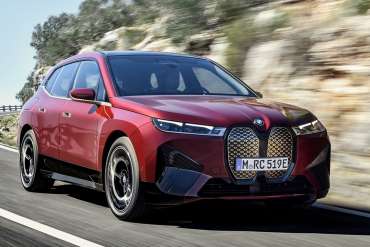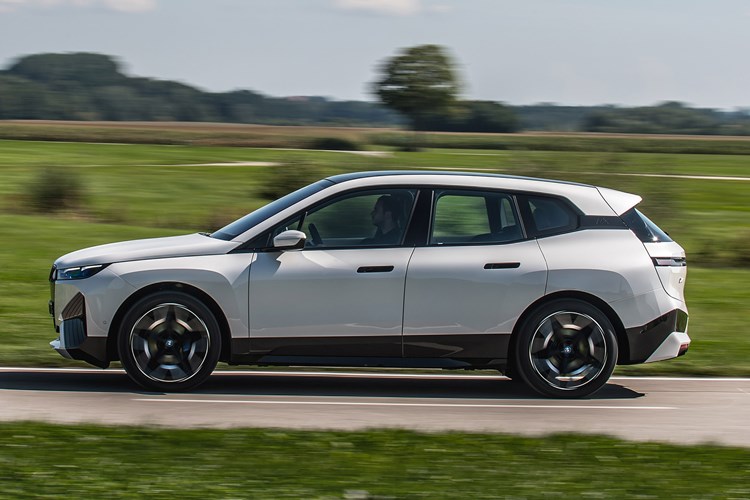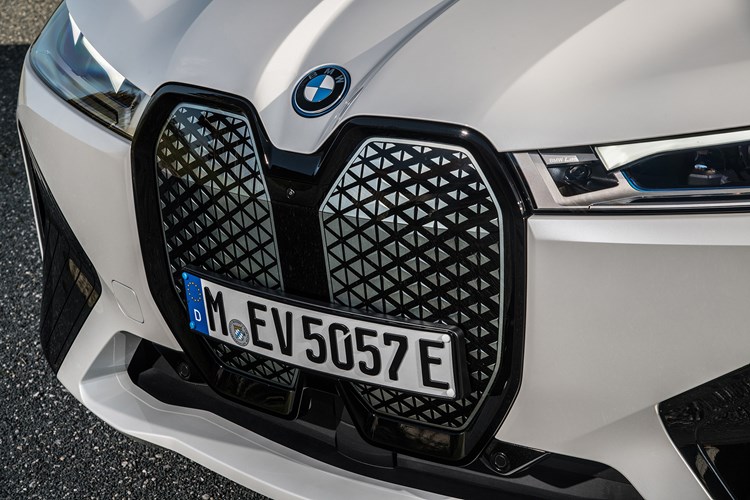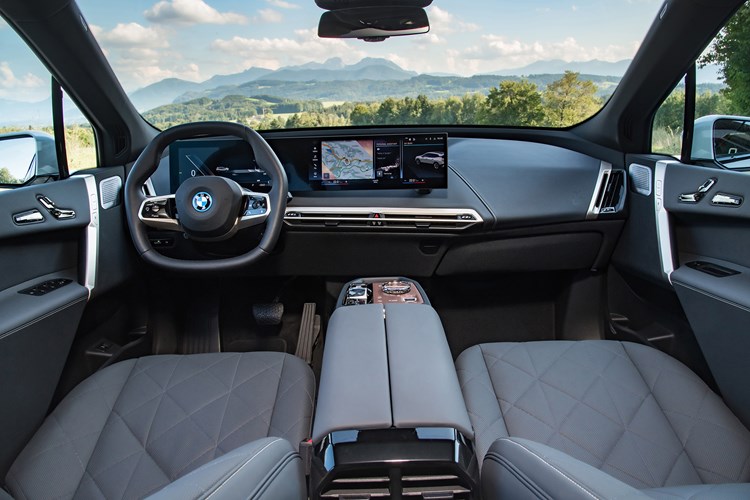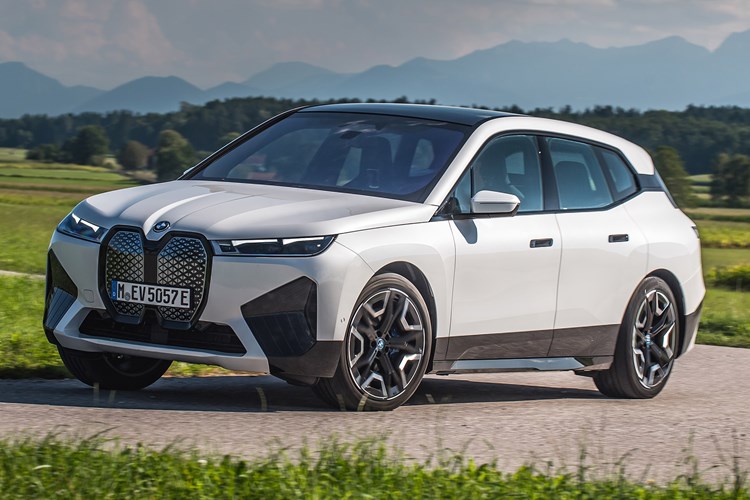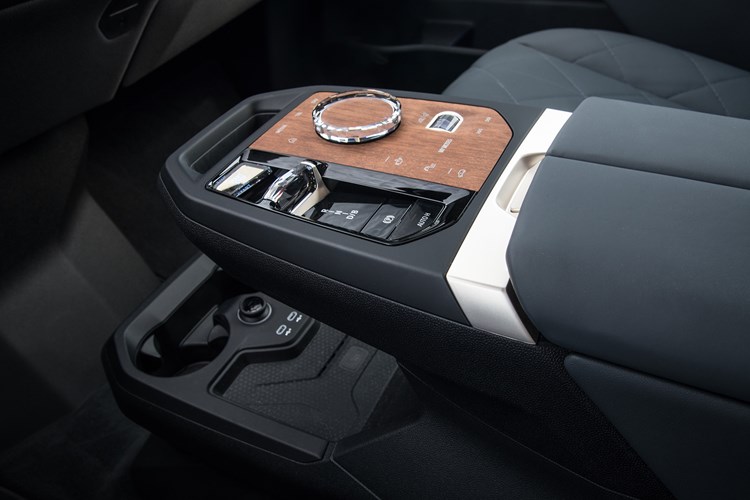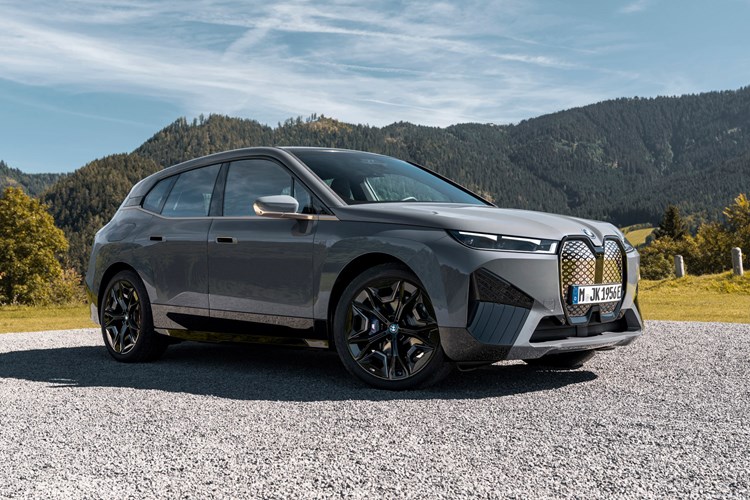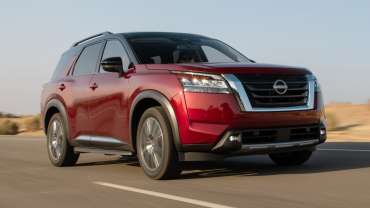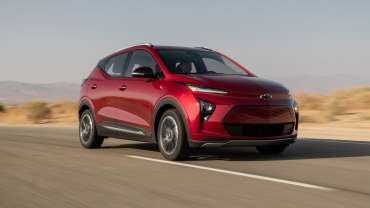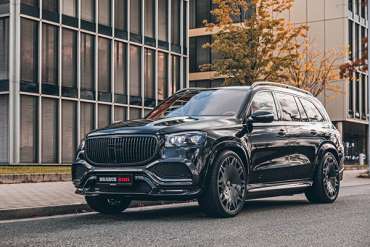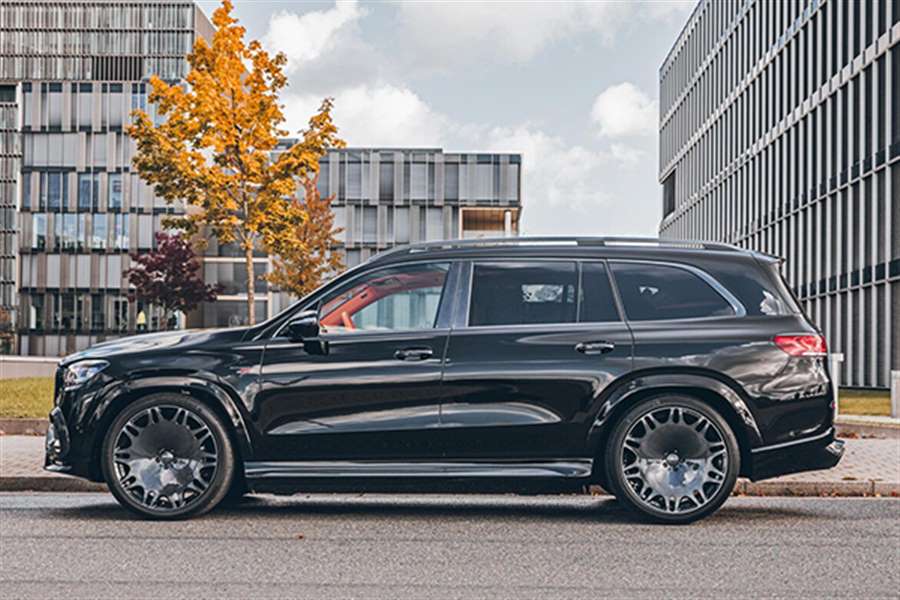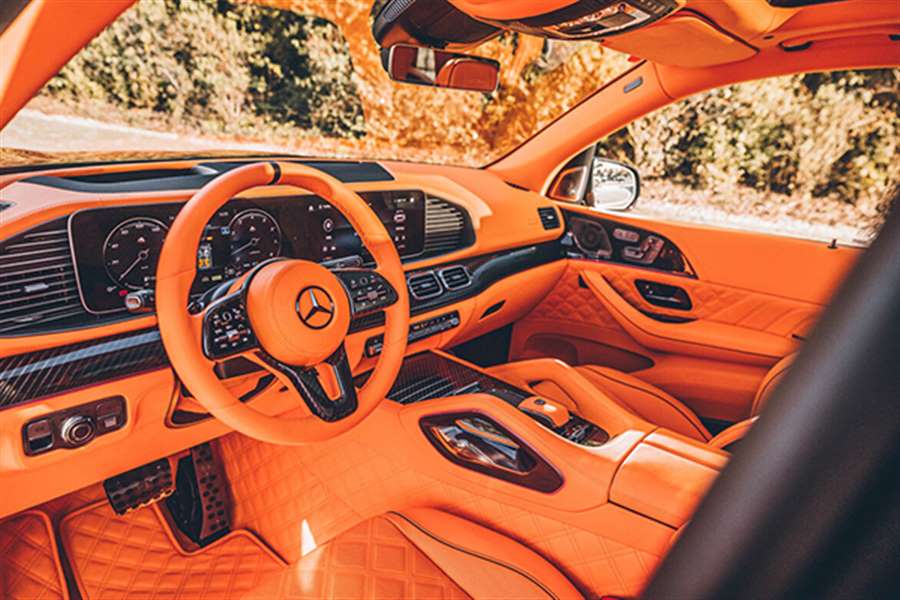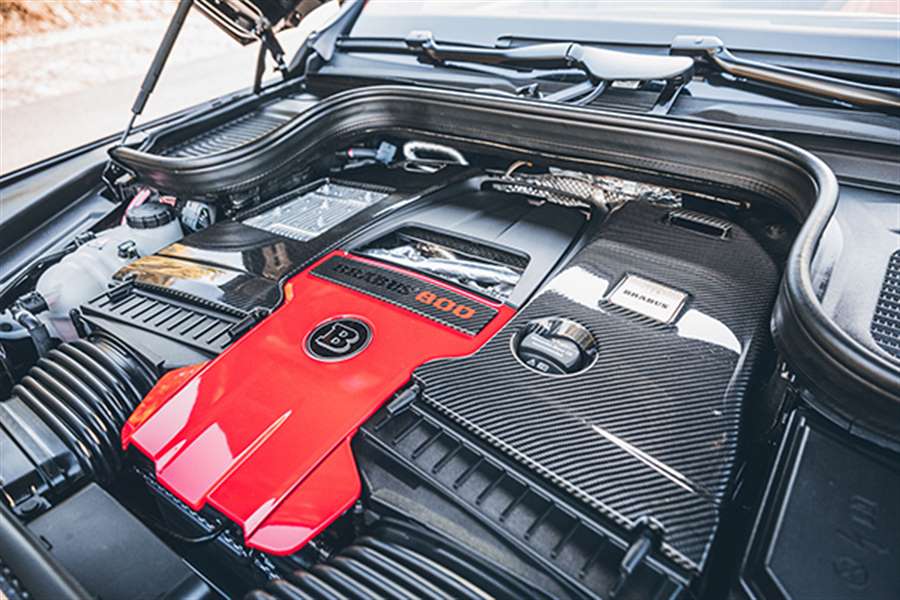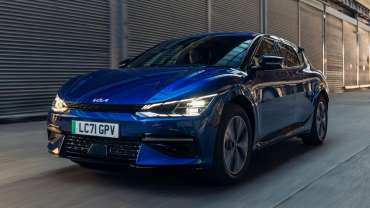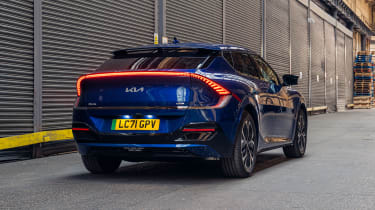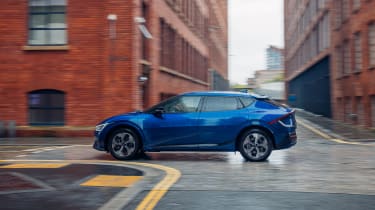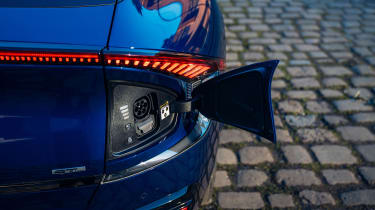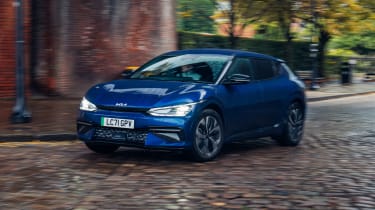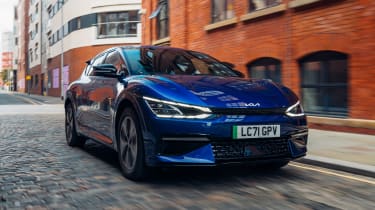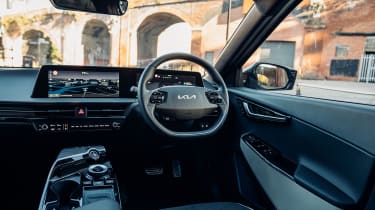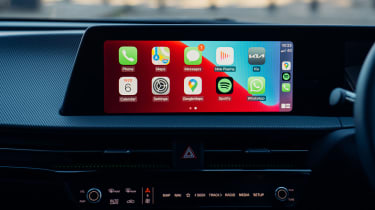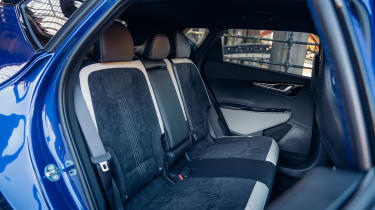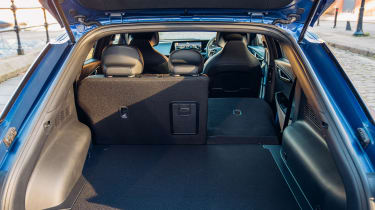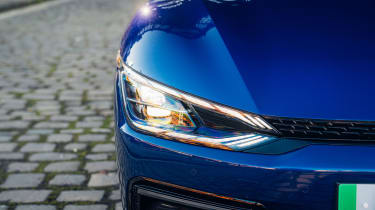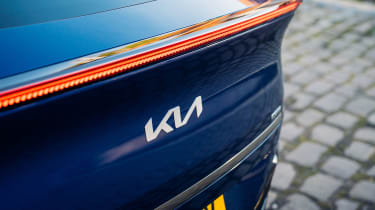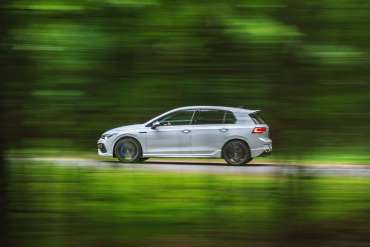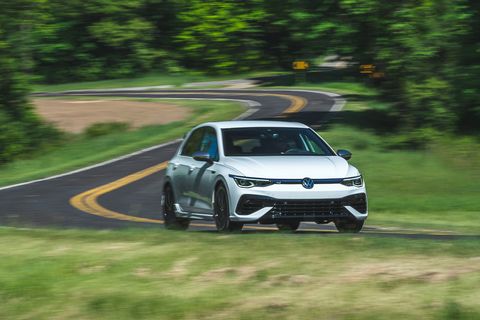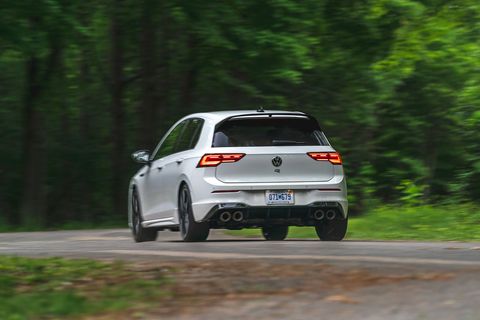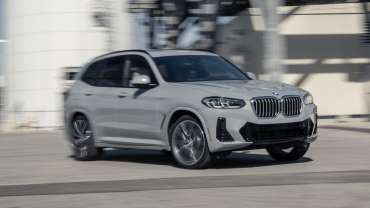The BMW iX is a new purpose-built luxury electric car, and the flagship for BMW’s latest electric vehicle technology. It combines controversial exterior looks with a plush, ‘lounge-style’ interior and a seriously impressive driving experience – as well as offering a large number of modern safety and driving aids.
Rivals include the Audi E-Tron, Mercedes-Benz EQC and Tesla Model X.
Is the BMW iX any good?
If you’re in the market for a premium electric car and like to make a striking impression, BMW has definitely got you covered. Although you will also need to spend quite a lot of money. Two versions are available to buy now – iX xDrive40 and iX xDrive 50 – with an M-performance model badged xDrive M60 to follow in summer 2022.
At this stage, we’ve only driven the xDrive50 model, which commands an eye-watering £93,905 asking price in more basic Sport specification, rising to £96,905 for the fancier M Sport variant.
For that you get BMW Gen5 – fifth generation – electric motor and battery technology, and an ‘intelligent material mix’ structure that incorporates carbonfibre, aluminium and high-strength steel. For the xDrive 50, this results in the fairly spectacular combination of 523hp and 765Nm with a claimed WLTP driving range of 380 miles per charge.
Living up to this promise, the iX is fast, comfortable, refined and outstandingly nimble for something that weighs over 2.5 tonnes and is similarly proportioned to a BMW X5 SUV. It also seems well able to deliver the on-paper driving range – though this will depend considerably on how much use you make of the available performance.
Other attention-grabbing features include a new generation of iDrive infotainment system (BMW Operating System 8) and a set of driver assistance features that include augmented-reality navigation, customisable digital and head-up displays, and adaptive brake recuperation that works superbly.
What about the way it looks?
BMW has never been a brand for building particularly beautiful cars, but there are some truly unusual angles and surfaces here. However, we would argue that it looks better in real life than it does in the pictures.
What’s more, not only is it unlikely to be mistaken for anything else – probably important for the kind of buyer who’s happy to drop nearly £100k on a BMW electric car – the design has been massaged to provide excellent aerodynamics.
This helps the iX drive faster and further, by allowing it to cut through the air more cleanly.
What’s it like inside?
The interior of the iX is just as unusual as the exterior – though not in such a controversial way. Here you’ll find the modern beauty of a contemporary luxury hotel room, rather than the edgy confrontation of modern art.
That’s not to say it will appeal to everyone. The slice of curving screen across the dashboard – actually two screens combined – is much as we’re coming to expect from EV interior design, while the latest iDrive software gives you comprehensive control in a reasonably instinctive manner. But the big, quilted seats are dramatic, the abrupt transition between surfaces and materials even more so, and the use of faceted crystal for some of the controls bordering on the gauche. The hexagonal steering wheel isn’t as odd to use as you might think, though.
Once again, this all helps the iX stand out against its rivals. It’s also very roomy inside, with lots of head and leg room front and rear. While there is a large battery pack under your feet, the floor doesn’t feel unnecessarily high.
What’s it like to drive?
BMW has a reputation to uphold for exceptional driving dynamics as we move further and further into the age of electric cars, and the iX certainly isn’t going to do that reputation any damage.
Built around BMW’s first bespoke electric vehicle platform since the i3 city car, it has a very stiff bodyshell, which is then further reinforced by the large battery pack bolted to the underside. Being so stiff is a real benefit to every area of the car, as it allows the suspension to work more effectively.
The battery pack is heavy. In the xDrive50 model it contains an enormous 111.5kWh of electricity storage and weighs around 650kg. Because this weight is concentrated so low in the chassis, it not only gives the iX lots of extra strength, it also lowers the centre of gravity – which is further good news for stability when driving round corners.
Adding another touch of luxury class, the iX uses variable air suspension rather than steel springs.
Combine all of the above, and you get a large car that manages to pull off the magic trick of riding bumpy surfaces brilliantly – despite 21-inch alloy wheels as standard – while also cornering with agility and precision on the twistiest of mountain roads. It leans a bit when really pressing on, but this only seems to highlight the depths of talent to the chassis tuning, allowing you to enjoy the process of handling it more.
Grip, meanwhile, isn’t an issue. The iX has two electric motors – one on each axle, making this the first BMW with electric all-wheel drive – and new control components mean that power can be measured out between them with exceptional speed. If one end of the car loses traction, the other compensates so swiftly the process is practically imperceptible.
Outright performance is mighty. The benchmark 0-62mph takes 4.6 seconds, but more significantly, BMW has engineered the electric motors to maintain their maximum power and torque at higher rpm. Overtaking punch is really impressive and the xDrive will hit and maintain its electronically limited 124mph top speed with ease (on derestricted autobahns in Germany).
What many owners will perhaps appreciate more, however, is the refinement. This is a very quiet car inside, even when travelling very quickly. BMW has taken the trouble to commission Oscar-winning movie composer Hans Zimmer to provide an electronic soundtrack that syncs beautifully with the way the car is being driven – but with this switched off, something that’s easily done via the infotainment system, the iX just whispers its way through the air.
What driver aids are available?
The iX is available with more driver assistance systems than BMW has ever offered before. Many of these will be familiar from other modern vehicles, but of particular interest are the elements that best show off the way the iX is properly aware of its surroundings.
For instance, it will monitor traffic lights to prompt you when they turn green. The head-up display will warn you if there are ‘dangerous’ bends ahead. The sat-nav can overlay direction information on a camera feed from the front of the car.
Our favourite example, however, is the ‘adaptive’ brake recuperation. This uses navigation and sensor data to vary the amount of braking effect you get from the motors whenever you release the accelerator – which sounds unnerving and complicated yet works remarkably intuitively. It will even allow the iX to coast at high speeds if that’s most efficient.
Engage the full B-mode, and you can drive almost exclusively without touching the brake pedal, as the motors will do the braking for you in all but extreme circumstances. And in exemplary fashion.
Better still, because of another integrated control unit balancing the effort between motor and traditional friction braking, when you do use the brake pedal, the feel and performance remains consistent at all times. Something that few other electric vehicles manage to pull off.
How long does it take to charge?
With 195kW fast-charging capability, the xDrive50 can be topped up with 93 miles of additional range in 10 minutes – or go from 10% to 80% in 35 minutes.
But this relies on very fast and comparatively expensive DC public chargers – the vast capacity of the battery pack means that you’ll need to allow 16 hours for 100% on a single-phase 7kW AC wallbox of the type most commonly found at UK homes and offices.
What different models and trims are available?
The iX is currently available in two versions: the xDrive40 priced from £69,905 and the xDrive50 priced from £93,905.
We’ve covered the stats of the xDrive50 in detail above. The xDrive40 produces 326hp and 630Nm of torque, does 0-62mph in 6.1sec, and has the same 124mph top speed; WLTP driving range is 257 miles.
Both versions are available in Sport and M Sport trim levels.
Standard equipment highlights for the iX Sport include an 18-speaker harmon/kardon hi-fi system, 21-inch alloy wheels, heated front seats, four-zone climate control and a substantial number of driver assistance systems.
The upgrade to iX M Sport – which costs an extra £3,000 – adds a styling package, bigger brakes, dark headlight glass and anthracite roof lining.
A car like this never has a short options list, and among the add-ons for the standard models are massaging front seats, heated steering wheel and other cabin surfaces, Bowers and Wilkins hi-fi upgrade, ‘Skylounge’ panoramic roof, Laserlight headlights, and an interior camera that can be used for security and fun.
High-performance BMW iX M60 on sale in summer 2022
In summer 2022 an M-performance model called the iX xDrive M60 joins the range. Power output for this is now confirmed at a staggering 619hp combined with a huge 1,100Nm peak torque, delivering 0-62mph in 3.8 seconds and an electronically limited 155mph top speed.
Maximum claimed WLTP driving range is equally impressive at 357 miles per charge, though it needs to impress, given pricing starts at £111,905.
For the money you also get bespoke BMW M suspension tuning, 22-inch alloy wheels, soft-close doors, powerful BMW Laserlights instead of regular LED headlights, and a technology suite that includes an interior camera, Bowers & Wilkins hi-fi, massaging front seats, heated everything, and BMW Parking Assistant Professional.
What else should I know?
The built-in connectivity means BMW will offer new features and allow customers to pay for upgrades to their iX via over-the-air updates. Among the things coming this way are an automated parking system that allows the car to learn and self-drive certain short-distance manoeuvres, which you’ll then be able to control from outside the car using your phone.
A heated element in the front grille area ensures all of the cameras and sensors built into the nose will still work when it’s snowing. BMW has put a lot of thought into this car.
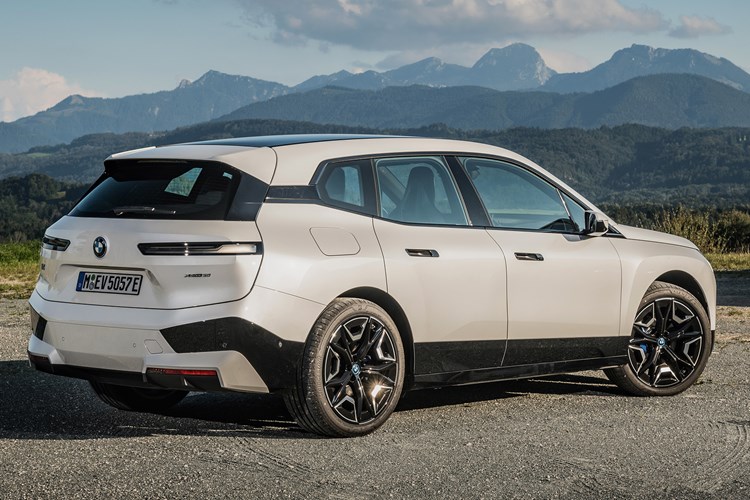
Should you buy one?
If you want a stand-out, high-price, high-quality electric car, close to the cutting edge of the current state of battery electric vehicle technology then the BMW iX could well be for you. The look of the thing is sure to raise more than a few eyebrows, but as a statement-maker that may be exactly what you’re looking for anyway.
Regardless, the interior is inviting, and the impressive blend of performance and serenity achieved by the driving experience means that even the most doubtful potential customer should at least take an iX for a test drive.
What we like
We can think of few other cars that are capable of providing such comprehensive ride comfort in combination with such cornering athleticism. The iX is at once a limousine and a creditable substitute for a sportscar – all while producing zero emissions in motion, thanks to its electric drive system.
That electric drive not only gives awesome performance, but also does things an ordinary combustion car can’t – most notably the adaptive recuperation that practically makes the brake pedal a thing of the past. Traction is mega as well, thanks to the twin-motor setup.
The technology used throughout – from the materials it’s built from to the latest iDrive – matches the iX’s price tag, while the refinement and the luxury interior put some proper icing on what is a pretty fancy automotive cake.
What we don’t like
Looks are subjective, so we’ll pass over that.
More of a concern is that not all of the driver assistance systems work consistently. With everything switched on, the iX can theoretically accelerate up to speed limits automatically as well as slow down for hazards and ‘assist’ through turns (though this relies on you touching the steering wheel – it is not a fully autonomous car). However, we found many of these facilities unreliable in action, and certainly would caution against relying on them too heavily.
Beyond this, most of the issues with the iX are the same you’ll face with any electric car – the classic being the way charging it up takes longer than filling a fuel tank. But as we all know there are means of coping with these things, and it’s getting easier and easier to live with an EV all the time.
(https://www.parkers.co.uk/bmw/ix/review/)


